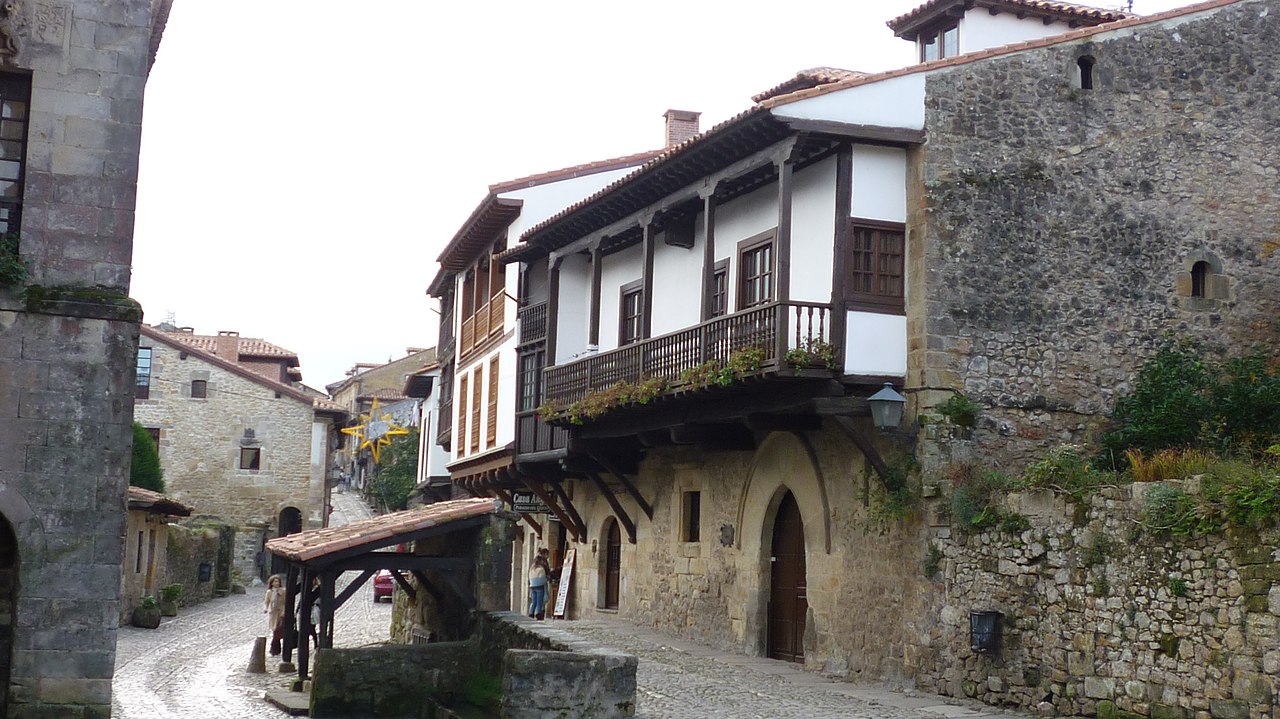
There are hundreds of medieval towns in Spain. They are towns in which time seems to have stopped and that, when we visit them, transport us to their aristocratic or heroic past in which they were manors, border limits or large economic centers.
Strolling through its narrow cobbled streets, seeing its ancestral homes and visiting its beautiful monuments make us feel like characters from the Middle Ages. And the best thing is that you can find them at all provinces of Spainat Barcelona but also Caceres and from Cantabria but also Málaga. For all this, we propose a tour of the most beautiful medieval towns in Spain.
Santillana del Mar, a classic among the medieval towns of Spain
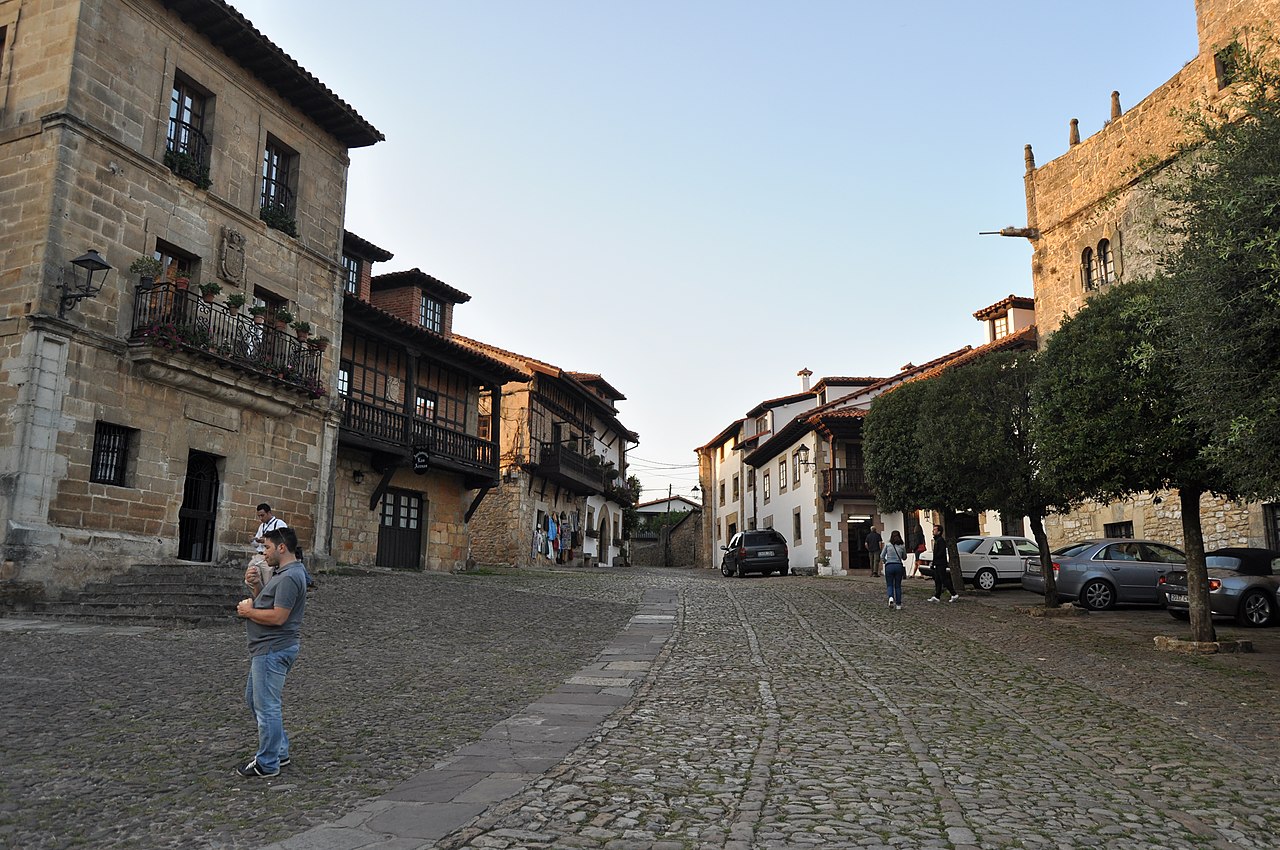
Santillana del Mar, perhaps the most typical medieval town in Spain
We begin our itinerary in what is perhaps the best-known medieval town in our country. If any of us were asked about a medieval town in Spain, many of us would answer Santillana del Mar.
Because, in addition, it is a beautiful villa in the heart of Cantabria. Not in vain, it holds the category of artistic historical ensemble and is part of the network of The Most Beautiful Villages in Spain. In fact, we could tell you that this town is not wasted. Almost all its buildings have something interesting.
But there are several that you have to see. It is the case of the spectacular collegiate church of Santa Juliana, built in the XNUMXth century following the Romanesque canons, although rebuilt in the XNUMXth. Be sure to visit its cloister, with its forty-two capitals. It is also essential that you see the imposing palace of the sands, a jewel of the early Renaissance with plateresque motifs.
It is not the only traditional house that you can see in Santillana. We also advise you to visit the palaces of Viveda, Mijares or Valdivieso, as well as the building of the Town hall, baroque style. In short, as we were saying, all the buildings in this Cantabrian town are of interest. Given the impossibility of telling you about each one of them, we will advise you to also see the houses of the Quevedo and Cossío, the Villa, the Archduchess or the towers of don Beltrán de la Cueva, del Merino and don Borja. All this without forgetting the Altamira Museum, with the replica of its famous caves.
Besalú, an impressive Romanesque heritage
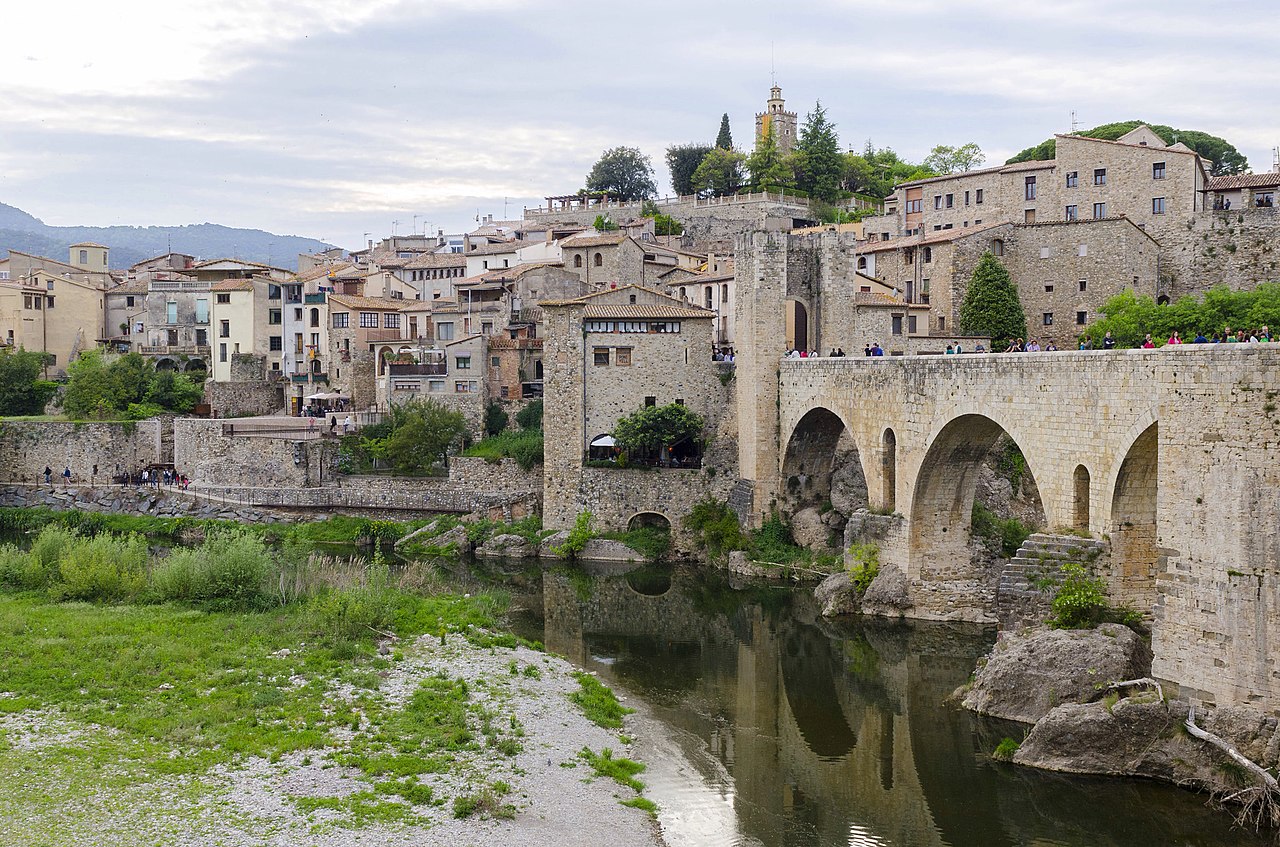
View of Besalu
We now travel to the region of La Garrocha, in the province of Gerona, to tell you about Besalú, another impressive medieval town in Spain. Already the same access to the villa, with its bridge from the XNUMXth century, it is spectacular. It measures one hundred and five meters in length and, nevertheless, has been restored on several occasions. Its three towers stand out. Two are next to the wall and a third, hexagonal and thirty meters high, in the middle.
Besalú is also artistic historical ensemble. And it has an interesting Jewish neighborhood narrow streets where you can still see the remains of the old synagogue and the miqveh, place where the ritual baths were made. For his part, the monastery of Sant Pere It was built in the XNUMXth century, although today only the temple remains. And, in the same square, you have the Cornellà house and the old Hospital of Sant Julia, with a façade from the XII.
La church of San Vicente It is a Romanesque jewel from the XNUMXth century and, outside the walls, you can see the remains of the castle and the church of San Martín. But we also want to advise you on something that probably won't appear in many common tourist guides. Since you are in Besalú, come to Castellfullit de la Roca, a beautiful medieval town even smaller and that seems to be hanging from a vertiginous cliff.
Aínsa, in the Huesca Pyrenees
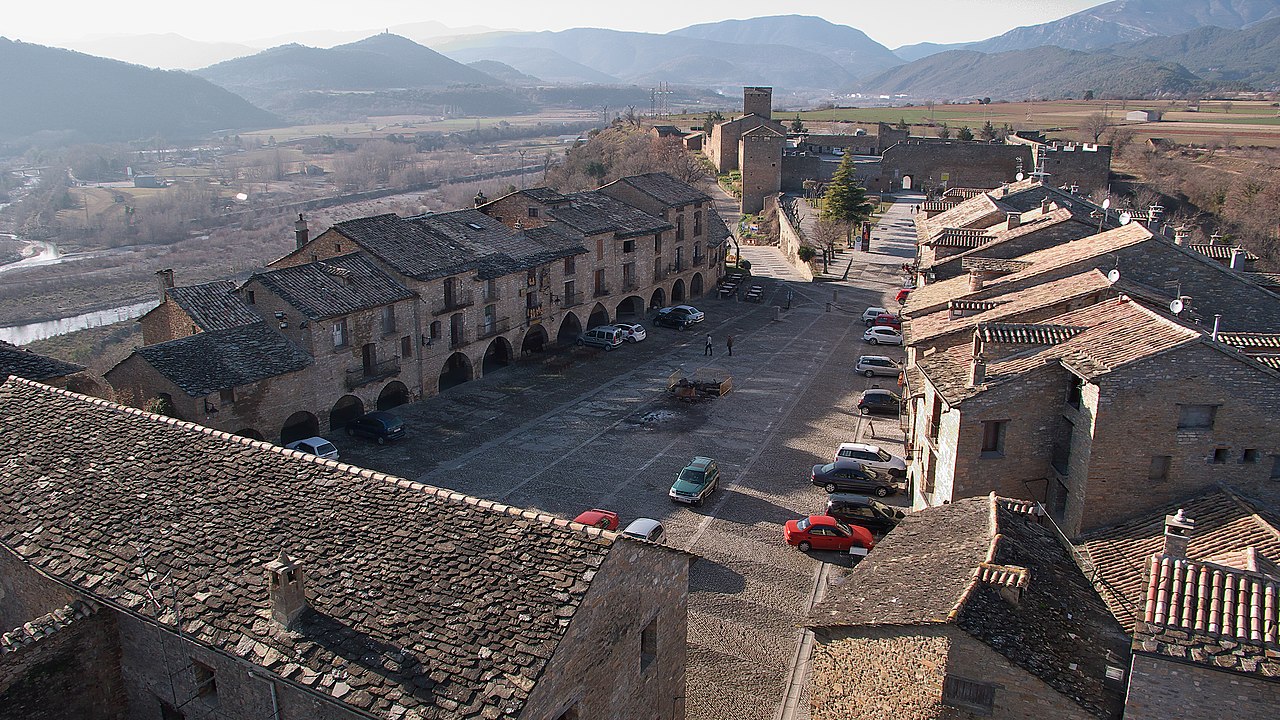
Plaza Mayor of Ainsa
Another of the most beautiful medieval towns in Spain is Aínsa, located in the Sobrarbe region of the province of Huesca. To its historical charm it adds a privileged nature, since part of its municipal area is included in the beautiful Natural Park of the Sierra and the Guara Canyons.
So medieval can we consider Aínsa that legend places its foundation in the year 724 thanks to the miracle of the cross of fire. According to her, due to the appearance of this supernatural element, the Christian troops of Garci Ximénez were able to defeat the Muslims. Already in the seventeenth century was built a temple with a cross inside to recall this story that you can still see today.
But the great symbol of Aínsa is its castle, built around the 1931th century. It was the true origin of the town, since from it the walls were extended to protect those who settled in its surroundings. Since XNUMX it is an Artistic Historical Monument.
We also advise you to see in the town of Huesca the church of Santa Maria, built between the XNUMXth and XNUMXth centuries following the Romanesque canons. The portal with four archivolts and the single nave covered with a half-barrel vault stand out in its simplicity, but, above all, the tower, of unique dimensions in the Aragonese Romanesque.
Do not forget to pass, also, by its beautiful Plaza Mayor, open and with its arcades, nor to see the Arnal and Bielsa houses, both from the XNUMXth century. But, above all, walk through its narrow cobbled streets as if you were in the Middle Ages.
Frías, a medieval city in Burgos
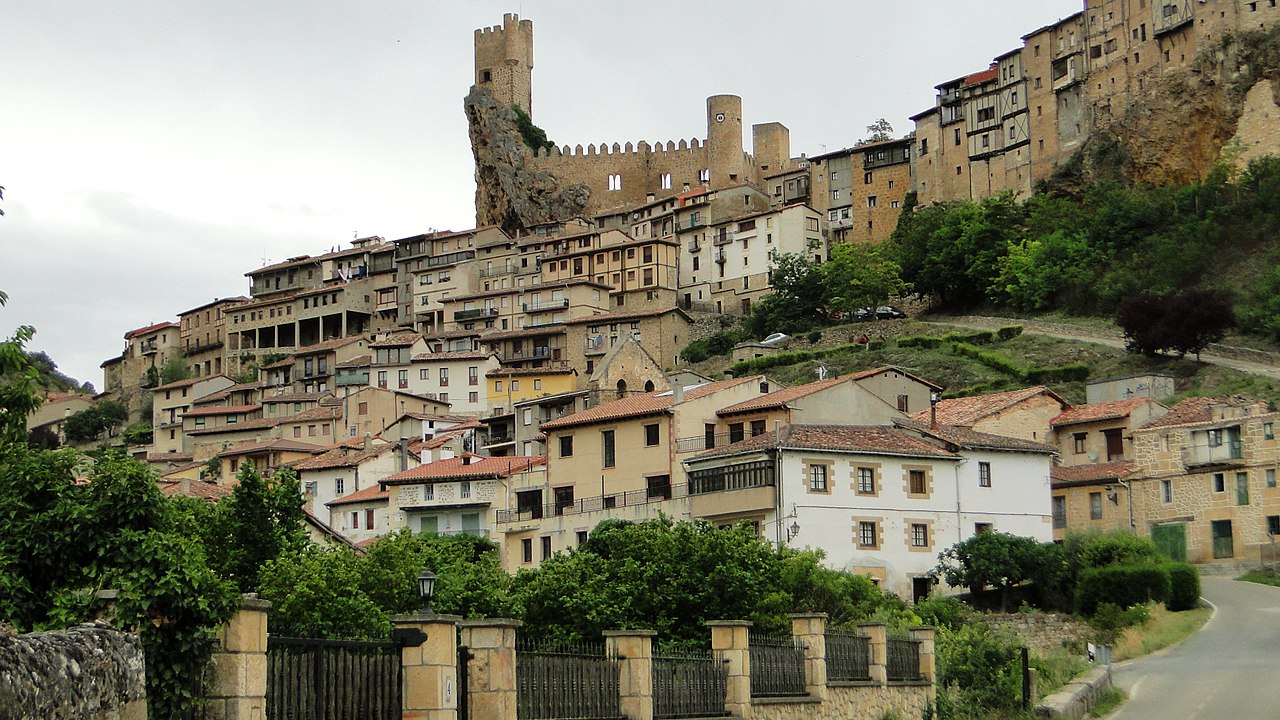
View of Frías, a medieval jewel in the province of Burgos
With less than three hundred inhabitants, you will be surprised to know that this town in the province of Burgos holds the title of city bestowed by the king John II of Castile in 1435. This will give you an idea of the importance it had in the Middle Ages.
One of its great symbols is the spectacular romanesque bridge from the XNUMXth century which, with its almost one hundred and fifty meters in length, is among the longest in Spain. Later reforms added Gothic elements such as some of its arches, which are pointed. Also later is the central tower that adorns it.
But, perhaps, the main attraction of Frías is its medieval houses. Some of them, like those in Cuenca, seem to be hanging from a hill on the road that joins the church of San Vicente and castle of the Velasco. The latter crowns, precisely, the hill of La Muela and is already registered in the XNUMXth century, although its current bill is from the XNUMXth. Its location and size gave it an undoubted defensive character for the area.
As for the aforementioned church of San Vicente Mártir and San Sebastián, it only conserves some elements of its primitive Romanesque form. It suffered various mishaps that forced many of its parts to be rebuilt. Likewise, its old cover was taken to the Cloisters Museum in New York.
You should also see other religious monuments in Frías such as the convents of San Francisco and Santa María de Vadillo, as well as the gothic church of San Vítores. And, regarding civilians, we advise you to visit the barracks house and palace of the Salazar. All this without forgetting the Jewish quarter, which was in the current streets of Convención and Virgen de la Candonga.
Albarracín, another of the most beautiful medieval towns in Spain
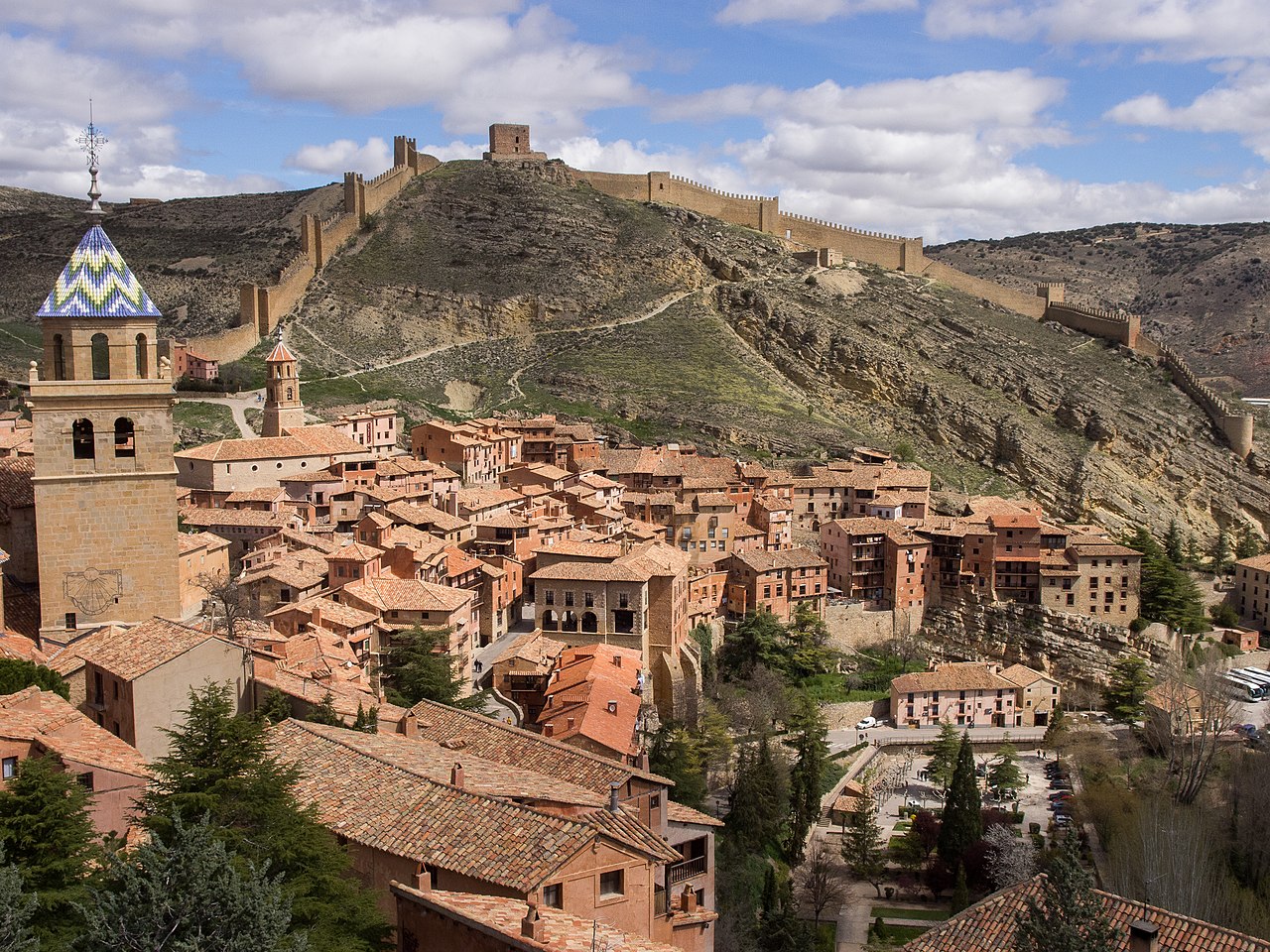
View of Albarracin
We return to the autonomous community of Aragon, specifically to the province of Teruel, to tell you about Albarracín, whose foundation is estimated around the XNUMXth century, when a group of Muslims settled there. He built for it an imposing alcazar which is currently an Artistic Historical Monument.
However, the entire town holds the title of historic monumental complex. To the Muslim era also belongs the walker tower, which was part of the defensive walls of the town. Symmetrical to this is the tower of Doña Blanca, which is located at one end of the park.
And, next to the castle, you have the savior cathedral, built in the XNUMXth century on the remains of an old XNUMXth century Romanesque temple. It combines Gothic, Renaissance and Baroque styles. Also, inside, you can see an interesting collection of Flemish tapestries.
Next to the cathedral is the Episcopal palace, with an interesting baroque façade, and, in the so-called Portal de Molina, the Julianeta house, a typical popular construction. Finally, the Town hall It is from the XNUMXth century.
Montefrío, medieval Andalusian
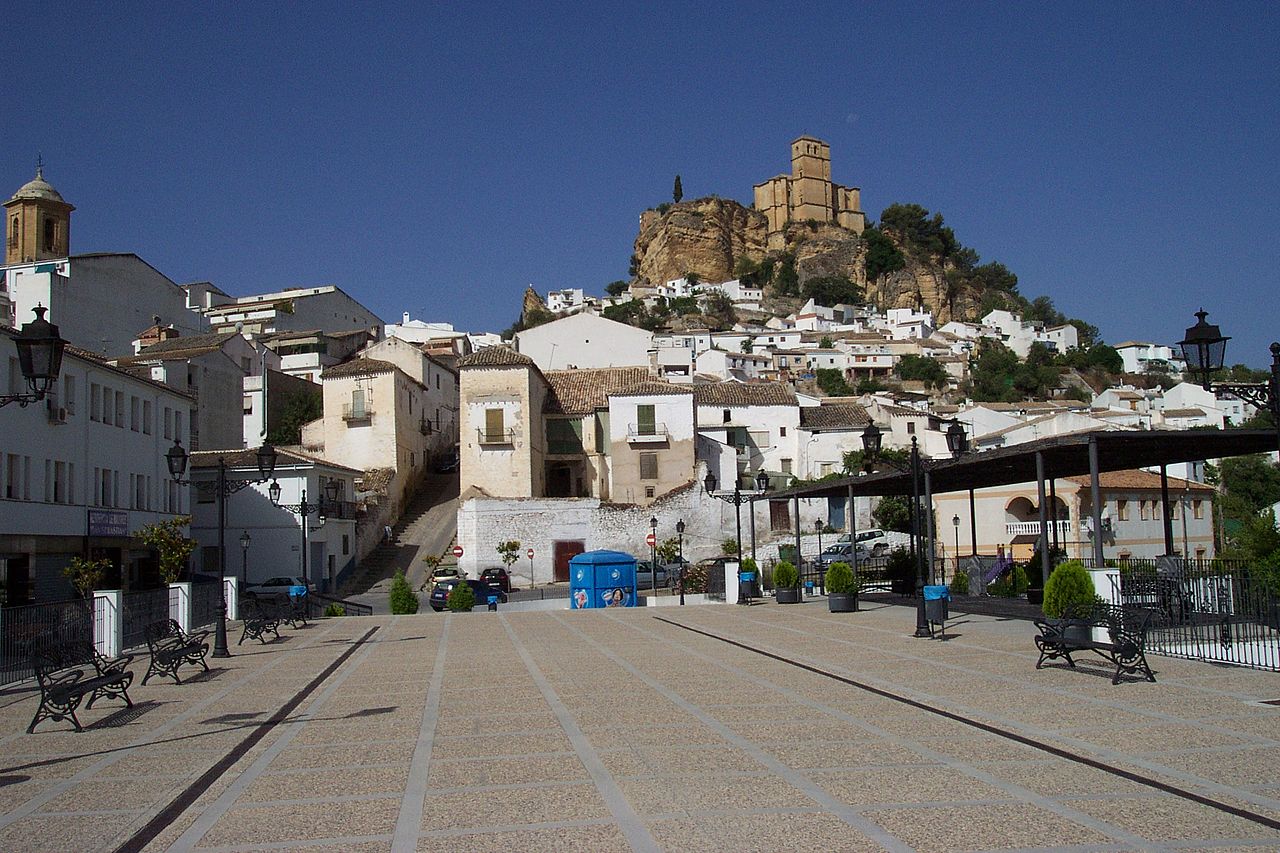
Montefrío, one of the most beautiful medieval towns in Spain
Located in the province of Grenada, Montefrío had enormous importance in the Middle Ages of Al Andalus. In fact, his castle housed the court of the Nasrid king Ismail III. This fortification is located on an imposing hill where there is also the church of the village, built in the XNUMXth century by Diego of Siloam.
But it is not the only thing you can see in Montefrío. In addition to strolling through its streets and seeing its white houses, you should visit the impressive landscape of Cerro de los Gitanos, where there are several archaeological sites and even a Roman town and bridge. And in the Barranco de los Molinos you will see waterfalls and, precisely, mills from the Latin era.
Likewise, you have to visit Montefrío, which has also been declared artistic historical ensemble, the churches of San Sebastián and San Antonio, the first Renaissance and the second Baroque. On the other hand, that of the Incarnation is neoclassical. For its part, the House of Trades and San Juan de Dios Hospital they are from the XNUMXth century and the Town Hall is a manor house from the XNUMXth century.
In conclusion, we have shown you some of the most impressive medieval towns of Spain. However, inevitably, we have left many in the pipeline. Just to mention a few, we will quote you Alquézar in Huesca, in peratalla in Girona, Ronda in Malaga or olite in Navarre. Go ahead and visit them, you won't regret it.